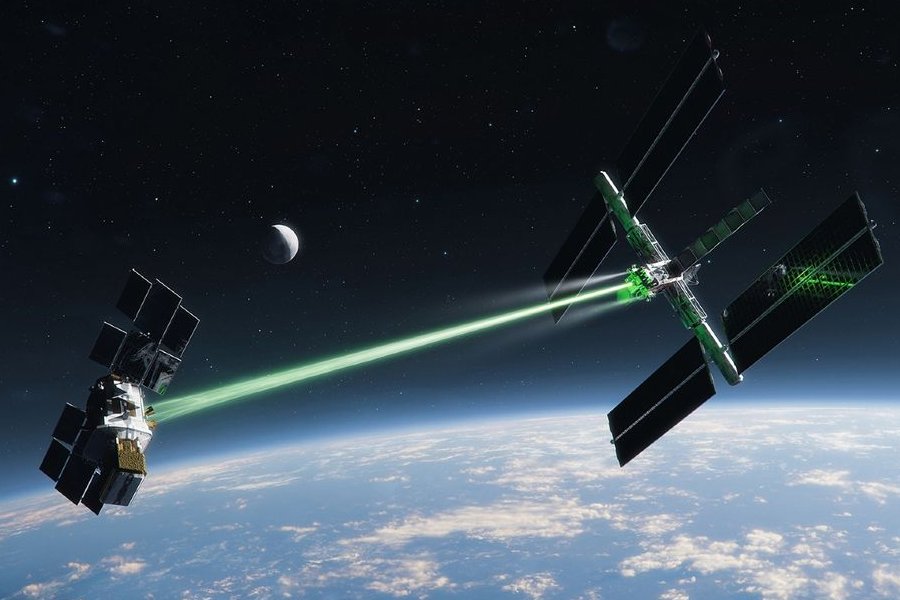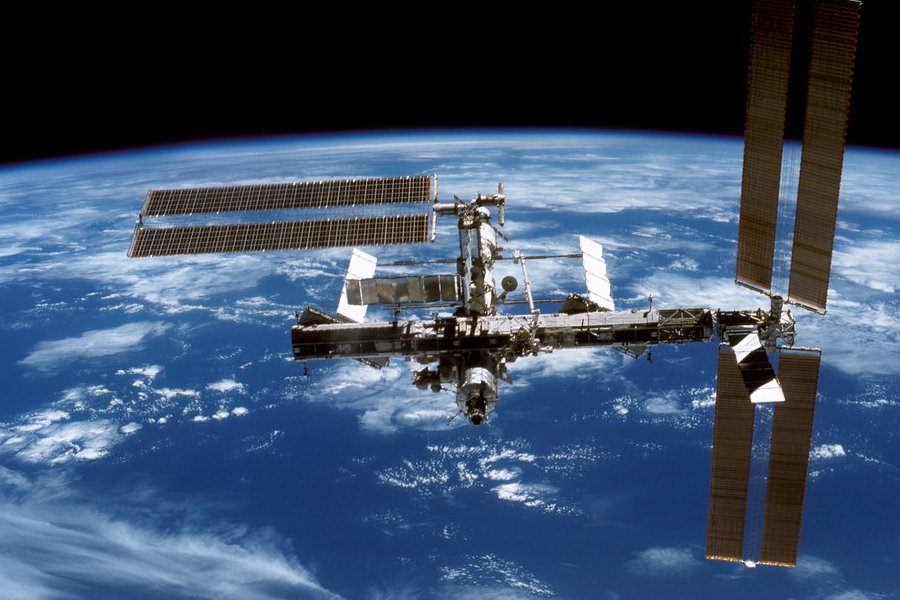Space probes are robotic spacecraft that explore our Solar System and beyond. From Mars rovers to Pluto flybys, these emissaries beam back revelatory images and readings from alien worlds. But what hidden mechanisms perform their feats across unfathomable distances? How do space probes work? How are space probes powered?
We will examine the communication arrays that link probes light-years away and decode data flowing at light speed. We will also survey the advanced instruments probing atmospheric chemistry and geologic history, searching for the building blocks of life.
Join us as we uncover each antenna, camera, and thruster, propelling space probes deeper into the cosmos.

How Do Space Probes Work?
Space probes, remarkable robotic spacecraft, are meticulously designed to venture into the vast realms of the Solar System, exploring planets and celestial environments. Their advanced power sources provide the reliable energy needed to sustain operations even when positioned at immense distances from the Sun.
Equipped with an array of onboard instruments such as cameras, spectrometers, and sensors, these probes play a pivotal role in collecting crucial data. This data encompasses information about alien atmospheres, surfaces, particles, or magnetic fields, offering invaluable insights.
To execute their missions precisely, space probes utilize control thrusters that orient the spacecraft along bespoke trajectories, enabling them to reach targets across the Solar System. Despite the challenges posed by vast distances, communication arrays facilitate the transmission of findings back to Earth.
The probes are not solely reliant on constant guidance from Earth; automation allows them to independently navigate when signals take too long to traverse vast distances. This level of autonomy, coupled with their technological capabilities, enables these probes to unveil profound discoveries that would be impossible through Earth-based observation alone.
Components of a Space Probe
The seamless integration of components empowers probes to navigate hostile alien environments that would be difficult for human explorers. Efficient solar arrays generate electricity and power all systems, while surplus energy is stored in batteries to ensure functionality during shadowed phases.
Furthermore, precision thrusters are crucial for powered flight control, facilitating course corrections and planetary orbit insertions. Incorporating sensitive science instruments within protective shields ensures their safety from extreme temperatures, radiation, and impact hazards. This design allows for exploring atmospheric properties, surface geology, and magnetic fields.
Omni-directional antennas contribute to robust communications, enabling the relay of findings back to eager Earth scientists across vast distances. The design also incorporates carefully considered redundancy measures, ensuring the probe’s continued operation despite individual parts degradation.
Computer system
The reliable spacecraft computer is its beating heart at the mission’s core, orchestrating all probe operations. These operations span from the initial launch sequence to the final transmission of datasets, with sophisticated programming guiding autonomous corrections as the probe navigates the void between worlds.
Moreover, the spacecraft computer efficiently manages priority experiment scheduling and undergoes regular upgrades to enhance its capabilities. These upgrades include increased processing power, integration with machine learning, and improved radiation hardening. Such advancements enable the direction of mission adaptations in response to discoveries and spacecraft anomalies.
These sophisticated probe computers govern various functions and process scientific data. The upgrades in flight go a step further, allowing probes to independently adapt sequences to optimize science return across billions of miles. Carefully balancing Earth-directed instructions versus onboard decision-making becomes crucial, especially in extreme communication lag times.
Rocket engines and fuel tanks
Chemical rockets provide the power needed for probes to adjust their course or enter planetary orbits after traveling through space for a long time. The carefully planned gravitational slingshots save fuel using planets’ energy to guide probes to their next destination.
Pressurized tanks store maneuvering fuel for probes over many years in space. Settling burns helps probes reach important observation trajectories around planets with atmospheres.
More advanced ion engines allow probes to travel to distant and cold places in the outer Solar System that normal rockets can’t reach. These highly efficient thrusters use electricity to accelerate particles behind the craft gently, pushing the probe faster.
The subtle but continuous acceleration from these engines helps probes gradually increase their velocity over millions of miles. This allows them to finally reach the distant frozen giants in the outer Solar System after cruising through the void for over a decade.
Guidance, navigation, and control systems
Guidance systems are crucial in aligning probes with celestial targets, whether for flybys, orbit insertion, or precision landing. They achieve this by utilizing radiometric scans of background constellations and Sun and Star trackers that pinpoint the probe’s location against space drift.
Accelerometer, gyroscopic, and rotor data are integrated to enhance navigational precision, ensuring scenes fill the frame as shutters snap and samples enter bays. Ongoing flight control is maintained through thruster firings, which are executed based on precise telemetry metrics.
This navigation system stabilizes crafts as they traverse pockmarked geology on alien worlds, allowing for trajectory adjustments in response to various cosmic factors. Fine-tuned thrusters also counteract solar wind resistance when angling luminous panels to sustain radiance from the Sun.

Solar panels and batteries
Flexible solar arrays efficiently convert photons into electricity, ensuring the continuous operation of all systems as probes journey closer to the Sun. Any excess energy is stored in batteries, allowing uninterrupted functionality even when plunging into frigid darkness.
For missions venturing beyond the reach of the Sun’s rays, radioisotopic units serve as reliable backup power sources. These units generate sufficient heat through ongoing atomic decay to power data-gathering activities during shadowed alien nights.
These extended nights can last for years, particularly during encounters with perpetually dark moons or within the depths of the Kuiper Belt, where solar illumination is absent. By combining renewable solar arrays with long-lasting nuclear augmentation, exploration efforts in these frozen regions receive the necessary energy.
Antennas and radio transponders
Sensitive antennas establish bidirectional links with Earth, ensuring continuous control and amplifying faint commands received while enhancing data return transmission strength. Strategically positioned to avoid interference, high-gain antenna precision focuses signals for optimal communication.
Special antennas with more powerful equipment handle heavier data loads to combat signal fade at greater distances. Data compression technology efficiently shrinks thousands of images for transmission. Also, sensitive chips play a crucial role in decoding weak and delayed signals as spacecraft venture deeper into the outer reaches of space.
Scientific instruments and sensors
Sophisticated instruments play a vital role in gathering key planetary data. Spectrometers are used to characterize chemical compositions, while magnetometers map magnetic fields. Particle detectors analyze solar wind constituents and behavior, and imagers capture alien features in great detail across various spectra.
Furthermore, seismometers and radars are employed to probe remote alien interiors. Sensor suites characterize environmental hazards by monitoring temperature extremes, radiation levels, and micrometeoroid threats during travel.
Robotic arms are also utilized to sample soils and atmospheres, delivering them to onboard labs for direct analysis. Together, these meticulous instrumentation techniques expand our understanding of alien worlds.
Launch Process
Specialized launch vehicles propel probes on controlled trajectories, enabling them to escape Earth’s gravitational pull. Precision inertial guidance and sequential thruster firings propel payloads through narrow injection gates, with separate and kick stages propelling probes through space.
The timing of precisely choreographed launch events is critical to ensure that probes are dispatched across millions of miles to reach far-flung locations within the Solar System. Careful pressure equalization and rigid placement protect sensitive instruments from violent vibrations and acceleration forces experienced during launch ascent.
Orbital Insertion
Specialized maneuvers are employed to insert probes into bespoke orbits, a process initiated upon reaching Mars or the outer moons. Thrusters play a crucial role in precisely adjusting trajectories and velocity, often utilizing flybys to gravitationally influence orbits and fall into optimized bound paths with the help of planetary gravity.
Success in this intricate process hinges on minute variances in factors such as approach angle, velocity timing, and thruster calibration. Achieving stable orbital geometry is the key to success, allowing probes to commence observation and exploration effectively.
Pre-Launch Preparation
Pioneering missions demand rigorous testing pre-launch. Labs simulate diverse extreme conditions probes will experience in space.
Thermal stability, calibration, fault tolerance, and redundancy are evaluated in simulations. Many operational scenarios and edge cases get checked before launch.
Mission objectives determine final integration, balancing many constraints. These include weight, complexity, radiation risks and success rates over immense distances towards briefly glimpsed destinations. Attaining reality takes one meticulous step after another.
Operations and Communication
Probes depend on autonomy and communication for exploring alien environments with immense lags complicating Earth control. Careful operating coordination maximizes returns within constraints across barely fathomable years separated.
Advanced autonomy enables independent operations when subtle adjustments or observations become necessary beyond Mars distances. But even with distance delays measured in light minutes, mission control can override probe actions if necessary.
Autonomous Operations and Remote Control
Priority imaging queues assess tradeoffs balancing conflicting demands like precision, timing and data volumes. Consuming just half a Watt, dormant processors monitor systems threatening anomaly-safe assets awaiting risks like radiation.
Despite the isolation, teams stay vigilant – continuously uplinking optimized instructions as revelations trickle back across the void. Careful collaboration realizes investment returns, uplifting human knowledge and wonder at our universe.
Conclusion
How do space probes work? Now that you know more about the intricacies behind space probes, you can better appreciate the monumental efforts behind their functioning.
These efforts enable probes’ exploration feats across hostile terrain. By leveraging advanced systems, probes unravel mysteries that expand our cosmic horizon one intrepid emissary at a time.
Glimpsing the inner workings of these robotic voyagers has illuminated some profound challenges. Though probes may traverse realms beyond human reach, the knowledge they return fuels imagination and expands our understanding of the universe.
Probes, satellites, and telescopes act as our surrogates, reaching where humans cannot yet tread to collect wisdom from alien soil. They then import this understanding back to restless minds on Earth that are eternally seeking enlightenment.
